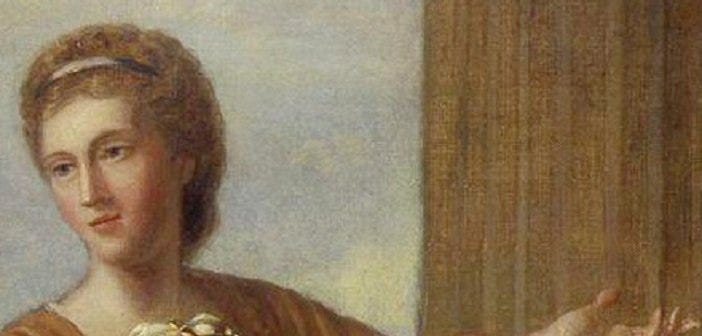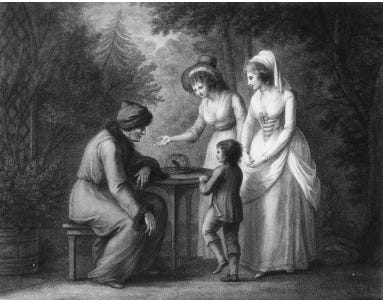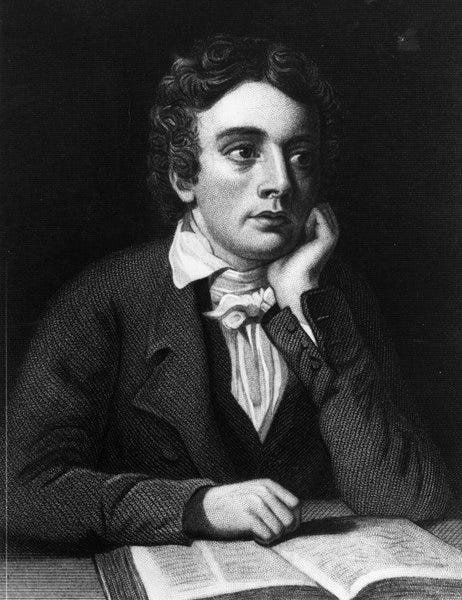What's Keats Got to do with It?: Anna Lætitia Barbauld
Anna Lætitia (Aikin) Barbauld (1743-1825)
The daughter of a Dissenter and Nonconformist Protestant teacher, Anna Lætitia spent her formative years in the company of pioneering naturalists, thinkers, and writers. Her father's colleagues encouraged the young girl to pursuit an education and to develop her literary talents1 . Anna Lætitia became a distinguished poet upon publication of her first volume, Poems, in 1773.
Those encouraging colleagues were none other than some of the most innovative thinkers whose work would become fundamental in our understanding of the world and existence itself. Particularly, Joseph Priestly, a fellow Dissenter and natural philosopher (read: scientist) who first discovered oxygen. Luckily, the Aikin home was not only a school, but a space that valued her "rebellious voice."1 Anna was not afraid to use such a voice against important men.
"The Mouse's Petition" is a meditative verse from the perspective of a lab mouse Anna Lætitia came across in Priestley's laboratory. She pinned the verse to its cell for Priestley to find the next morning. Samuel Taylor Coleridge (later her friend) remarked that "thanks to Mrs. Barbauld,[...] it has become universally fashionable to teach lessons of compassion towards animals."2 Though Barbauld later states that the poem is actually "a petition of mercy against justice."3 (it brought the American prison system to my mind). This seemingly simple poem remarks on weighing souls on the scales of the greater good. It is a contemplative piece with no clear answer and Barbauld embodies the true marvel of this period.
This was a liminal era; science was born, medicine pulsated with questions and discoveries, philosophy crossed borders, wars, and languages. At the nexus of these renaissances was art. Barbauld was a rarity: a married, educated woman and even more, she was brave enough to create amidst all the thresholds.
But Anna Lætitia Barbauld did not stop at poetry. She would also excel as an essayist, critic, editor, and children's author. She worked with prolific writers such as Samuel Taylor Coleridge (and was not afraid to critique The Rime of the Ancient Mariner). Her work as a children's author established parameters still used today: large type and rhythmic prose to aid in learning. 1 She held a "belief in and respect for the importance of early education in the forming of a mind and character." 1
She wrote despite many personal tragedies and professional criticism. An abolitionist, feminist, and free thinker, Barbauld's quiet fortitude saw her writing well into her 80's.
So, what's Keats got to do with it?
I came across Anna Lætitia Barbauld's work the usual way. I was bored and decided to read my Norton Anthology from front to back. I never made it past the first poem as it was "The Mouse's Petition" by Anna Lætitia Barbauld. Three hours later I surfaced from the research haze. Do you know who else had a wonderfully unique Dissenter education? John Keats, that's who. And the ties don't stop there. They were both at the juicy center of medicine, poetry, influential thinkers (Keats took walks with Coleridge!), lived in Hampstead (the bluebells!) I came to realize that Dissenter communities and their efforts to create space for science and G-d are maddeningly intricate and fundamental to medical history.
Literary history has a way of illuminating the question plaguing the human species: what does it mean? Keats asks this in every piece, though he decides that the meaning is we're not supposed to find the meaning. Barbauld is the same, in some ways. The meaning is the contemplation of the moral center. Both seem to agree that the asking of the question is what matters most.
More on the "What's Keats Got to do with It?" series
Read more of Anna Lætitia Barbauld's work here:
https://www.poetryfoundation.org/poems/43617/to-a-little-invisible-being-who-is-expected-soon-to-become-visible
Barbauld, A. L. (1773)."The Mouse's Petition." https://www.poetrybyheart.org.uk/poems/the-mouses-petition/
Bellanca, M. E. (2003). Science, Animal Sympathy, and Anna Barbauld’s “The Mouse’s Petition.” Eighteenth-Century Studies, 37(1), 47–67. http://www.jstor.org/stable/25098029
Works Cited:
1. www.poetryfoundation.org/poets/anna-laetitia-barbauld
2. https://unboundproject.org/anna-laetitia-barbauld/
3. Saunders, J. (2002). “The Mouse’s Petition”: Anna Laetitia Barbauld and the Scientific Revolution. The Review of English Studies, 53(212), 500–516. http://www.jstor.org/stable/3070572






